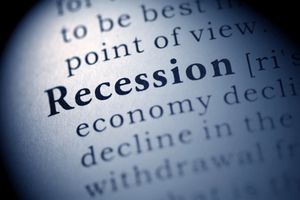
Washington D.C. – Global financial markets are once again gripped by uncertainty as a potential United States government shutdown looms, threatening to disrupt critical economic data releases and send ripples through currency markets. As of late September 2025, the prospect of an impasse in Washington over funding bills has heightened anxieties, with Wall Street bracing for increased volatility and a notable weakening of the US dollar. The scenario underscores a recurring vulnerability in the world's largest economy, where political gridlock can quickly translate into global market jitters.
This looming shutdown, driven by ongoing disagreements on key spending priorities including healthcare and tax credit extensions, stands to create a significant data vacuum. Federal agencies responsible for vital economic statistics, such as the Bureau of Labor Statistics (BLS), are expected to suspend non-essential operations. This disruption could delay crucial reports like the September jobs report and the October Consumer Price Index (CPI), leaving policymakers, including the Federal Reserve, "in the dark" and hindering their ability to make informed decisions regarding monetary policy. Investors are particularly wary, given the historical tendency for the dollar to retreat in anticipation of such events, signaling a broader loss of confidence in the stability of US fiscal governance.
Political Gridlock Threatens Economic Stability
The current predicament stems from a protracted legislative battle over the federal budget for the upcoming fiscal year, which begins October 1st. Congressional leaders and the White House have been locked in negotiations, but significant ideological divides, particularly concerning the scope and allocation of government spending, have thus far prevented a consensus. Key players include the House of Representatives (US: HOUSE), the Senate (US: SENATE), and the Executive Branch (US: EXECUTIVE), each vying to assert their priorities in a highly polarized political environment. The timeline has seen weeks of intense debate, marked by partisan brinkmanship and a series of failed votes on appropriations bills, pushing the nation closer to the fiscal cliff.
Specific details indicate that disagreements are centered on several contentious issues. Certain factions within Congress are demanding deep cuts to discretionary spending, while others are pushing for increased funding in areas like defense and social programs. The debate over extending specific tax credits and the future of healthcare spending further complicates the picture, making a compromise elusive. This political deadlock has already begun to manifest in initial market reactions; the US dollar has shown signs of weakening against major currencies like the Euro (EUR) and the Japanese Yen (JPY), reflecting investor apprehension.
Historically, brief government shutdowns have often seen markets "look through the noise," with indices like the S&P 500 (NYSEARCA: SPY) experiencing mixed performance but generally recovering in subsequent months. However, the current situation is perceived with heightened concern due to reports that the administration is preparing for potential mass layoffs for programs lacking funding, a move that could amplify the economic and market impact compared to previous shutdowns where furloughed workers were often guaranteed backpay. This adds a new layer of uncertainty, suggesting that the current event might not follow the typical, relatively benign pattern of past shutdowns.
Corporate Exposure and Market Vulnerabilities
A US government shutdown could create a distinct bifurcation in corporate performance, with certain sectors and companies facing significant headwinds while others might exhibit surprising resilience or even opportunistic gains. Companies heavily reliant on government contracts, particularly within the defense, aerospace, and IT services sectors, are among the most vulnerable. Firms like Lockheed Martin (NYSE: LMT), Raytheon Technologies (NYSE: RTX), and various government IT contractors could see delays in new contract awards, payment deferrals on existing projects, and a general slowdown in federal procurement. This immediate financial strain could impact their quarterly earnings and future revenue projections.
Beyond direct contractors, sectors that depend on government regulatory functions or data dissemination could also suffer. For instance, the financial services industry, including major banks like JPMorgan Chase (NYSE: JPM) and Bank of America (NYSE: BAC), relies on timely economic data from agencies like the Bureau of Economic Analysis (BEA) and the Census Bureau to inform their lending and investment strategies. A disruption to this data flow could lead to increased uncertainty in financial models and investment decisions. Similarly, industries requiring federal permits or approvals, such as energy companies or those in environmental services, might experience operational delays.
Conversely, some companies or sectors might be less affected or even see indirect benefits. Consumer staples and essential services, for example, tend to be more resilient during periods of economic uncertainty, as demand for their products remains relatively stable. Companies with minimal exposure to government contracts or those operating primarily in international markets might also weather the storm more effectively. Furthermore, in times of market volatility, certain "safe-haven" assets, such as gold miners like Barrick Gold (NYSE: GOLD), could see increased investor interest, potentially boosting their stock performance. The overall impact, however, will largely depend on the duration and severity of the shutdown, with a prolonged impasse exacerbating negative consequences across the board.
Broader Implications and Historical Parallels
The potential US government shutdown is not merely an isolated political event; it represents a significant disruption within broader industry trends and carries substantial ripple effects across the global economy. In an era where supply chains are already strained and geopolitical tensions are elevated, adding domestic political instability to the mix could further dampen global economic sentiment. For multinational corporations, particularly those with significant operations or customer bases in the US, the uncertainty can lead to deferred investment decisions and a more cautious approach to expansion. Competitors in other stable economies might gain a temporary advantage as global investors seek less volatile environments.
Regulatory and policy implications are also profound. A shutdown halts the processing of new regulations, permits, and licenses, creating a backlog that could take weeks or months to clear once the government reopens. This delay impacts sectors from environmental compliance to drug approvals, affecting companies like Pfizer (NYSE: PFE) or Moderna (NASDAQ: MRNA) awaiting FDA decisions. Furthermore, the repeated occurrence of shutdown threats erodes international confidence in the US's ability to manage its fiscal affairs, potentially affecting its standing as a global economic leader and the attractiveness of US Treasury bonds as a benchmark safe asset.
Historically, the US has experienced numerous government shutdowns, with varying degrees of impact. The 2013 shutdown, lasting 16 days, and the 2018-2019 shutdown, which stretched for 35 days, offer key precedents. While the immediate economic impact on GDP growth has generally been estimated as modest (around 0.1-0.2% reduction per week of shutdown), the cumulative effect on consumer and business confidence can be more damaging. The longer the shutdown, the greater the potential for a more significant and lasting drag on economic activity, particularly if it disrupts critical government services or payments. These events often highlight the fragility of political consensus and the interconnectedness of political stability with economic health.
Navigating the Path Ahead: Scenarios and Adaptations
As the deadline approaches, several scenarios for the US government shutdown unfold, each with distinct short-term and long-term possibilities. In the short term, a brief shutdown (a few days to a week) might lead to an immediate dip in market sentiment and a temporary weakening of the dollar, followed by a quick rebound once a resolution is reached. Such an outcome would largely be seen as a political skirmish with minimal lasting economic damage. However, a prolonged shutdown (several weeks or more) presents a far more challenging outlook, potentially leading to a more significant economic slowdown, sustained market volatility, and a deeper erosion of consumer and business confidence.
Companies and investors will need to consider strategic pivots and adaptations. Businesses with government contracts may need to activate contingency plans for delayed payments or project halts, focusing on diversifying revenue streams or conserving cash. Industries reliant on federal data or regulatory functions might seek alternative data sources or prepare for extended waiting periods. For investors, the immediate challenge lies in managing portfolio risk, potentially by rebalancing towards more resilient sectors or safe-haven assets. Long-term, the recurring nature of these fiscal impasses might encourage greater international diversification for portfolios, reducing over-reliance on US-centric assets.
Market opportunities and challenges will undoubtedly emerge. Short-term, opportunistic trading around resolution news could present chances for quick gains, while a prolonged shutdown could create buying opportunities in oversold quality stocks. The challenge will be accurately assessing the duration and severity of the event. Potential outcomes range from a last-minute legislative deal averting the shutdown entirely, to a temporary continuing resolution that kicks the can down the road, or a full-blown, extended shutdown. Each scenario demands a different approach from market participants, emphasizing the need for agility and a clear understanding of the evolving political landscape.
Concluding Thoughts: A Test of Resilience
The looming US government shutdown serves as a critical test of market resilience and political functionality. The immediate key takeaway is the pervasive uncertainty it injects into global financial systems, manifesting in volatile currency markets and a potential disruption to essential economic data. While historical precedents suggest that markets often recover from brief shutdowns, the current environment, marked by heightened partisan divisions and specific administrative preparations for potential mass layoffs, indicates that the impact could be more pronounced this time.
Moving forward, the market will closely watch for any signs of legislative compromise or escalation. Investors should prioritize understanding their exposure to government-dependent sectors and be prepared for potential short-term volatility. The dollar's performance, particularly against other major currencies, will be a key indicator of international confidence in the US economy's stability. While a resolution is ultimately expected, the frequency of these fiscal standoffs underscores a structural challenge within US governance that continues to introduce unpredictable elements into global financial planning.
In the coming months, investors should monitor not only the legislative progress but also the actual economic data releases once they resume. The quality and timeliness of this data will be crucial for assessing the true economic cost of any shutdown. Furthermore, the Federal Reserve's response to a potential data vacuum and its implications for monetary policy will be paramount. This event, regardless of its duration, will likely reinforce the importance of diversified portfolios and a cautious approach to assets directly tied to the ebb and flow of US political stability.
This content is intended for informational purposes only and is not financial advice







